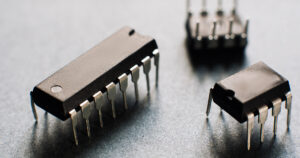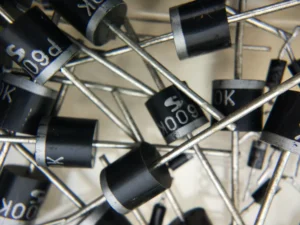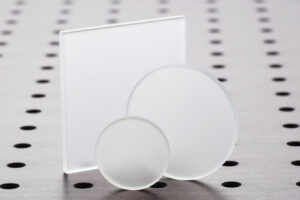
What is BJT?
BJT stands for Bipolar Junction Transistor, which is a type of electronic device used in amplification and switching circuits. It is a three-layered semiconductor device consisting of two p-n junctions formed between three doped regions of the semiconductor material.
The three regions are called the emitter, the base, and the collector. The base is lightly doped compared to the emitter and collector, which are heavily doped. The transistor can be operated in two modes: the forward-active mode and the saturation mode.
In the forward-active mode, a small current flows into the base, which controls a larger current flowing between the emitter and collector. This makes the transistor useful as an amplifier. In the saturation mode, the transistor acts like a switch, with the collector-emitter voltage dropping to a low value when a sufficient base current is applied.
Working of BJT
When a voltage is applied to the base-emitter junction, it causes a forward bias, which allows current to flow from the emitter to the base. This current causes a large number of minority charge carriers to be injected into the base region. The minority carriers are then swept across the base region and collected by the collector. This process is called minority carrier injection and is the key to the operation of the BJT.

The current flow between the emitter and collector is controlled by the current flow between the base and emitter. A small change in the current flowing into the base can cause a large change in the current flowing through the emitter and collector. This amplification property of the BJT makes it an important component in electronic circuits, including amplifiers, oscillators, and switching circuits.
In summary, the BJT operates by controlling the flow of current between the emitter and collector through the use of minority carrier injection and amplification of the current flowing into the base.
Types of BJTs:
BJTs can be classified into two types based on the majority carrier in the doped regions of the transistor: NPN and PNP transistors.
NPN Transistor: In an NPN transistor, the emitter is made of N-type semiconductor material, while the base and collector are made of P-type semiconductor material. The minority carrier in the base region is holes, while electrons are the majority carrier in the emitter and collector regions. The transistor is designed to conduct current from the collector to the emitter when a small voltage is applied across the base-emitter junction.
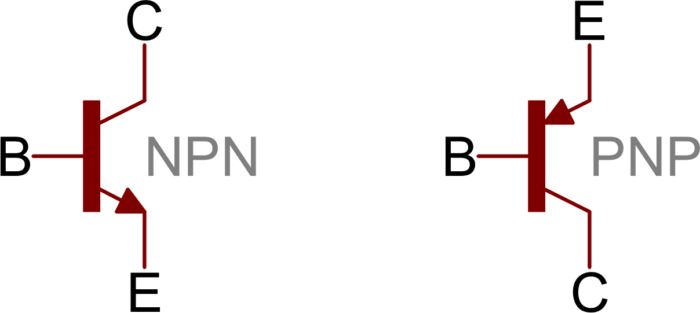
PNP Transistor: In a PNP transistor, the emitter is made of P-type semiconductor material, while the base and collector are made of N-type semiconductor material. The minority carrier in the base region is electrons, while holes are the majority carrier in the emitter and collector regions. The transistor is designed to conduct current from the emitter to the collector when a small voltage is applied across the base-emitter junction.
Applications of BJTs:
BJTs have a wide range of applications in electronic circuits, including amplification, switching, and oscillator circuits. Some of the common applications of BJTs are:
- Amplification: BJTs can be used to amplify electrical signals in electronic circuits. This is especially useful in audio and radio frequency applications.
- Switching: BJTs can be used as electronic switches to turn on or off the flow of electrical current in a circuit. This is useful in digital logic circuits and power control applications.
- Oscillation: BJTs can be used to generate and control oscillations in electronic circuits, which is useful in applications such as radio transmitters and receivers.
- Voltage regulation: BJTs can be used in voltage regulators to maintain a constant voltage in a circuit, even when the input voltage fluctuates.
- Logic circuits: BJTs can be used in digital logic circuits to perform logical operations, such as AND and OR gates.
- Power control: BJTs can be used to control the flow of high-power electrical currents in applications such as motor control, power supplies, and lighting control.
Overall, BJTs are versatile electronic components that are widely used in many different types of electronic circuits and devices.
BJT Configurations
BJTs can be configured in three ways: the common emitter (CE), common base (CB), and common collector (CC). Each configuration has its own set of characteristics and applications.
Common Emitter (CE) Configuration: In the CE configuration, the emitter is the common terminal between the input and output circuits. The input is applied to the base, and the output is taken from the collector. The CE configuration provides high voltage gain, high current gain, and medium input impedance. It is widely used in amplifier circuits, voltage regulators, and power-switching circuits
.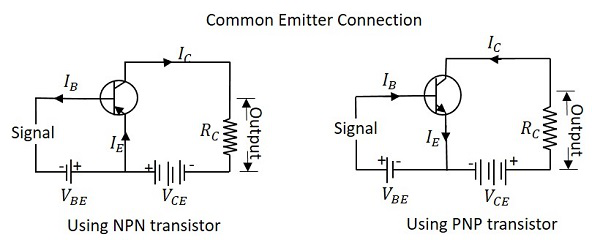
Common Base (CB) Configuration: In the CB configuration, the base is the common terminal between the input and output circuits. The input is applied to the emitter, and the output is taken from the collector. The CB configuration provides low voltage gain, high current gain, and high input impedance. It is mainly used in high-frequency circuits, such as radio frequency (RF) amplifiers, oscillators, and mixers.
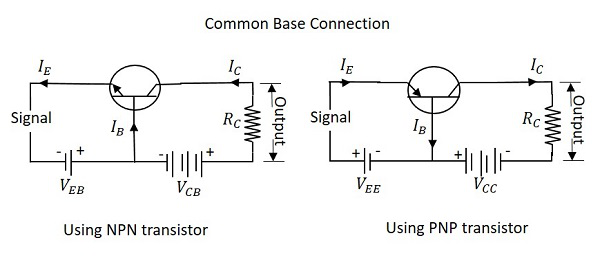
Common Collector (CC) Configuration: In the CC configuration, the collector is the common terminal between the input and output circuits. The input is applied to the base, and the output is taken from the emitter. The CC configuration provides unity voltage gain, high current gain, and high output impedance. It is commonly used in buffer and impedance-matching circuits.

Use of BJT Configurations
The three basic configurations of bipolar junction transistors have different characteristics that make them useful for different types of applications. Here are some examples of how each configuration can be used:
Common emitter configuration
1. Amplification of small signal voltages in audio amplifiers, preamplifiers, and other low-power applications.
2. Switching applications where a high current gain is required.
3. Oscillator circuits where a positive feedback loop is needed.
Common base configuration
1. High-frequency amplification, such as in radio frequency circuits.
2. Impedance matching, where the input impedance of the circuit needs to be matched to the output impedance of a signal source.
3. RF mixer circuits, where the base is used as an input terminal and the collector and emitter are used as output terminals.
Common collector configuration
1. Impedance matching, where the output impedance of a circuit needs to be matched to the input impedance of a load.
2. Buffering applications, where the output voltage of a circuit needs to be isolated from the input voltage.
3. Voltage follower circuits, where the output voltage follows the input voltage with unity gain.
Overall, the choice of configuration depends on the specific requirements of the application, such as the input and output impedance, voltage gain, current gain, and frequency range.
Selection Criteria for BJT
When selecting a bipolar junction transistor for an electronic circuit, there are several criteria that should be considered:
Current gain
The current gain, or beta value, is a measure of how much the transistor amplifies the input current. The higher the beta value, the more amplification the transistor provides.
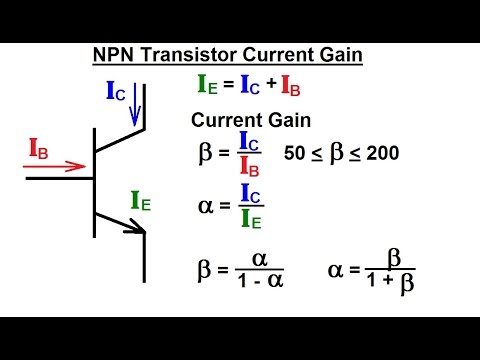
Maximum collector current
The maximum collector current is the maximum amount of current that the transistor can handle without being damaged. This value should be chosen based on the maximum current expected in the circuit.

Maximum collector-emitter voltage
The maximum collector-emitter voltage is the maximum voltage that the transistor can handle without being damaged. This value should be chosen based on the maximum voltage expected in the circuit.
Frequency range
The frequency range of the transistor should be chosen based on the frequency of the input signal or the frequency range of the circuit.
Power dissipation
The power dissipation of the transistor should be chosen based on the power requirements of the circuit.
Package type
The package type of the transistor should be chosen based on the requirements of the circuit, such as space limitations, heat dissipation, and ease of installation.
Overall, the selection criteria depend on the specific requirements of the circuit and the application, and the transistor should be chosen based on careful consideration of these factors.
Conclusion
In conclusion, selecting the right BJT for a particular application is critical to ensure the proper functioning of the electronic circuit. Maximum ratings, gain, frequency, switching speed, noise performance, and cost are important criteria to consider when selecting a BJT. It is important to understand the application requirements and the specifications of the available BJTs to make an informed decision. With the proper selection, BJTs can be used to achieve excellent performance and reliability in a wide range of electronic applications.
Also Read: Exploring the Exciting World of Diodes: Types, Formulas, and Applications
